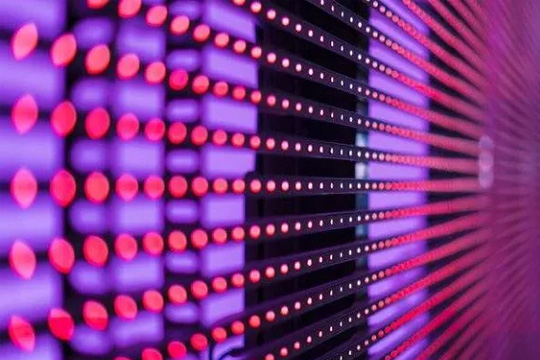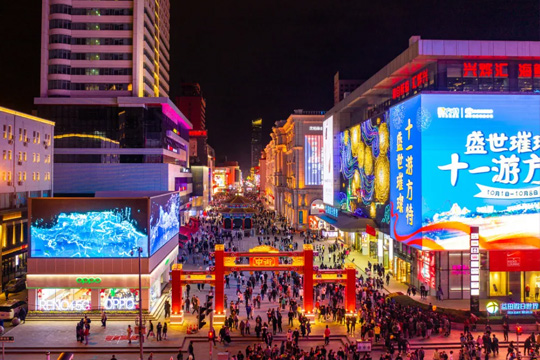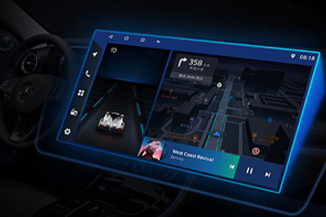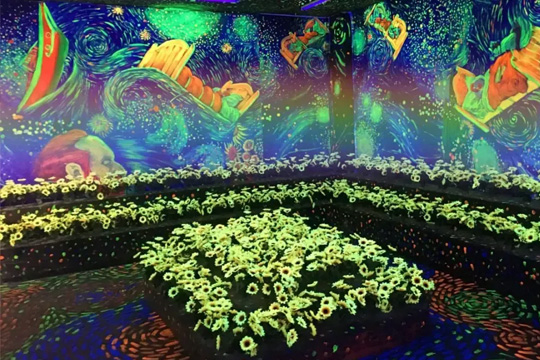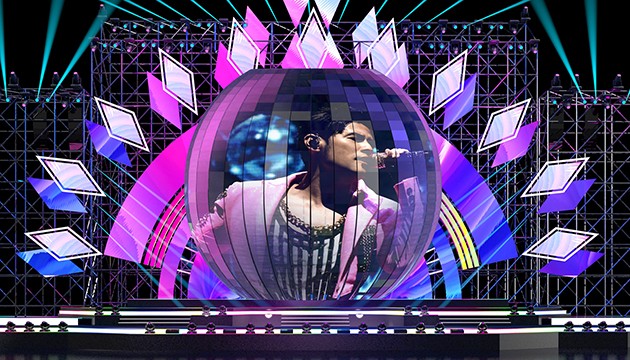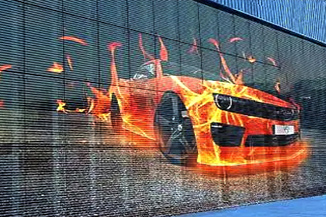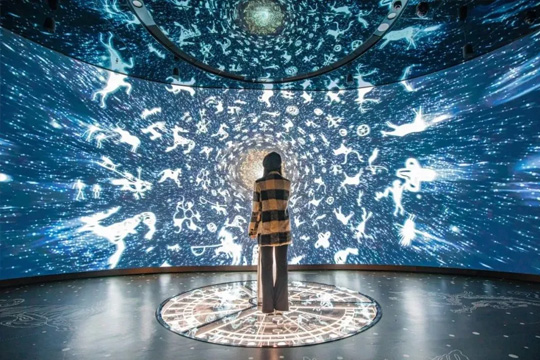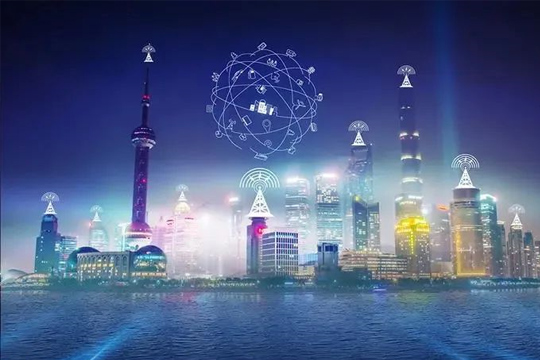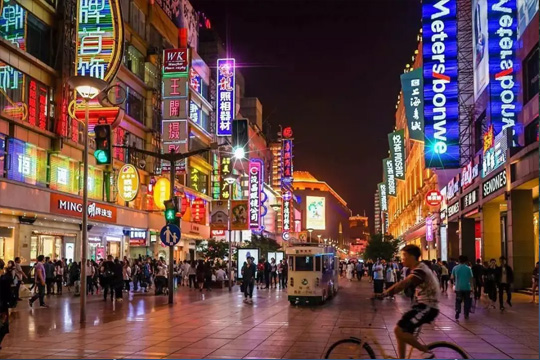Publisher: Supplier of LED Display Time: 2024-11-28 14:55 Views: 1107
In today's visual information-driven era, the display as a key window to deliver content, ubiquitously decorated with our life and work scene. Among them, LED display and liquid crystal screen as if the display field of the two ‘stars’, each with their unique advantages, in a different stage shine. LCF editor will be in this article to make clear the difference between them, for accurate selection of display solutions to meet the needs of the reference.
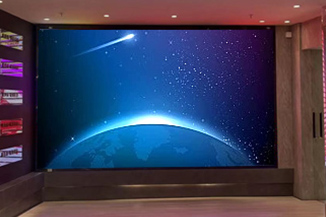
Imaging principle: light up the way is very different
LED display is the use of light-emitting diodes as self-luminous components for imaging. Numerous tiny LED lamp beads densely arranged in the screen substrate, through precise control of each lamp bead's brightness, brightness and colour changes, combined with colourful, dynamic and vivid images and video information. Red, green, blue three-colour lamp beads with different brightness ratios and reconcile, can bloom millions of colours, just like a painter with a colour brush to outline the picture point by point, the active light-emitting properties of the display content is also clearly discernible even in bright light, the picture is rich in three-dimensional sense and sense of transparency.
On the contrary, the LCD screen, its imaging relies on changes in the arrangement of liquid crystal molecules to regulate the light transmission path. LCD screen is mainly composed of backlight, liquid crystal layer, polarizer, colour filters and so on. The backlight source is often a cold cathode fluorescent lamp (CCFL) or today's mainstream LED backlight module, which emits a uniform light that passes through the liquid crystal layer. Liquid crystal molecules in the electric field under the action of twisted arrangement, like a switch to control the amount of light through the amount and direction, and then by the colour filter colour processing, and ultimately show a colour picture, which belongs to the passive light-emitting, their own does not emit light, the need to borrow the backlight illuminated, the display effect is softer, more delicate, similar to the ‘behind the scenes light’ projection imaging.
Picture quality presentation: details, colours have their own characteristics
LED display with self-luminous advantage, in brightness and contrast performance is unique. High brightness up to thousands of nits or even higher, outdoor light, advertising, event broadcasting screen is still dazzling; Contrast easily over a million to one, the dark part of the deep, bright part of the bright, night scenes, light and shadow effects show vivid. However, if the pixel density of the small pitch LED screen is not good, close viewing will now have a sense of granularity, subtle text, icon edges are slightly rough.
LCD screen image quality is its signature, high pixel density, the same size resolution is often better than ordinary LED screen, such as 4K, 8K ultra-high-definition screen is commonly found in high-end LCD TVs, monitors, sharp text, image details, very suitable for dealing with fine graphics, high-definition film and television. Colour, thanks to the mature backlight and light filtering technology, wide colour gamut coverage, natural and smooth colour transition, but limited by the liquid crystal layer light leakage and other issues, the contrast ratio is mostly in the thousands to thousands of one to one interval, black display is difficult to reach the ultimate depth effect of the LED screen.
Appearance and installation: flexibility and thin and light debate
LED display structure is more flexible, indoor small spacing screen thin models can be seamlessly spliced into a giant curtain wall, for the command centre, showroom; outdoor screen according to the needs of the site custom shaped screen, curved, round, wavy can be, fit the building contours, with the help of lightweight box module, easy to install and dismantle to adapt to the high altitude, walls and other complex scenarios. However, due to the circuitry and heat dissipation structure behind, the overall thickness is relatively thicker than that of the LCD screen.
The pursuit of thin and delicate LCD screen, especially consumer-grade products, such as ultra-thin LCD TVs hanging on the wall as a mural, border narrowing design nearly borderless, strong visual immersion. But the splicing application, due to the border gap, colour tuning problems, splicing screen integrity, consistency is slightly worse, more in the form of the whole machine installed in the TV cabinet, bracket, large splicing project implementation difficulties than the LED screen.
Cost and life: weighing cost-effectiveness and durability
Initial acquisition cost, ordinary small and medium-sized LCD screen due to large-scale mass production, mature industry chain, price friendly, family TV, office computer screen popularity; LED display according to the point spacing, size, configuration, cost span, small pitch HD indoor screen, large outdoor advertising screen cost. However, long-term operation, LED lamp bead life of up to tens of thousands of hours, stable performance, maintenance and low cost of replacement lamps; LCD backlighting with the use of long decay, about a few years to be replaced, LCD panel in case of physical damage maintenance costs, especially large screen, the overall life cycle costs need to be considered comprehensively.
Application Scenario: Exclusive Stage to Show its Strengths
LED display screen dominates outdoor advertising, large stadiums, stage performance world. Busy commercial street giant advertising screen, day and night uninterrupted eye-catching; sports stadium ring-shaped screen, real-time race conditions, exciting playback shocked the whole field; concert stage background screen, with the music of light and shadow changes, to support the warm atmosphere.
LCD screen sitting indoor office, home entertainment ‘throne’, computer monitors to ensure efficient work, high-definition TV to provide immersive viewing, monitoring room, medical imaging equipment by its accurate display to assist in decision-making, diagnosis, quiet indoor environment to play the length of the delicate picture quality.
LED display and LCD screen in the imaging roots, picture quality style, physical form, cost-effectiveness and scope of application there are significant differences. According to the use of light, viewing distance, content fineness and budget and other factors to weigh the choice, in order to let the two in their respective ‘good at the field’, the visual value of the maximum, lighting up the world of colourful information.
The above is the LCF editorial analysis of the difference between the LED display and LCD screen, I hope to help you, and welcome you to add or correct. LCF is a collection of R & D, manufacturing, sales, operation, service in one of the national speciality and speciality of the new small giant enterprises, national high-tech enterprises. If you need to buy LED electronic display friends can also directly contact the LED display manufacturer LCF, the big country brand, trustworthy!
